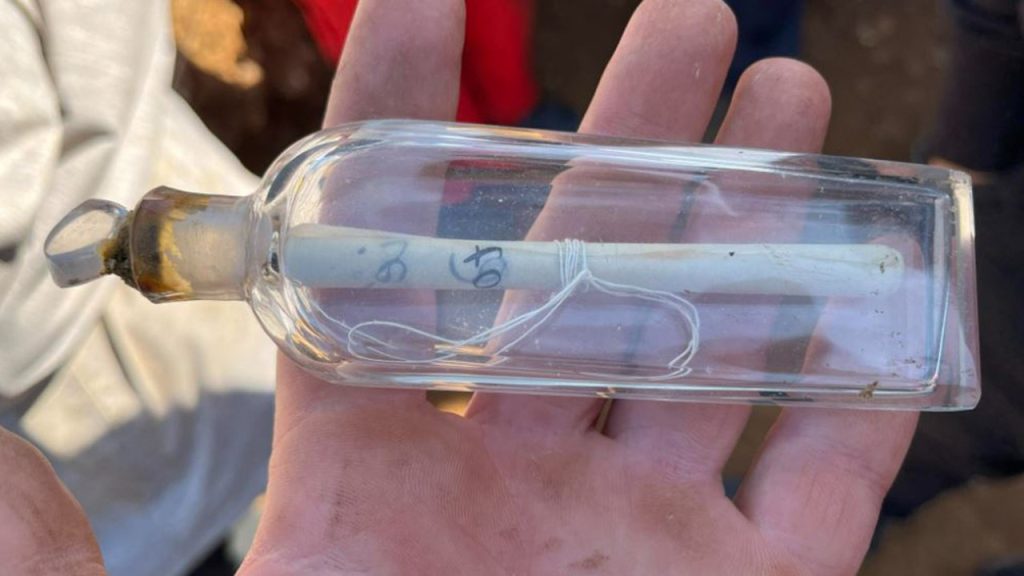A team of volunteers excavating an archaeological site in Normandy, France, discovered a “time capsule” from the 19th century. The message found inside a glass flask was written by P. J. Féret, a member of various intellectual societies from Dieppe, who had carried out excavations in the area back in January 1825. The volunteers were conducting an emergency dig at the ancient Gaulish clifftop village near the town of Eu due to erosion on the hillside when they made the discovery. The message and flask were found inside an earthenware pot at the Cité de Limes, sparking excitement among the team.
Team leader Guillaume Blondel described the discovery as a “magic moment”, as they had known about past excavations in the area but were still surprised to find a message from two centuries ago. Finding time capsules in archaeology is rare, as most archaeologists do not expect anyone to come after them once the work is done. The Gauls, who were Celts living in mainland Europe between the 5th century B.C.E. and 5th century A.D., had occupied the Cité de Limes, which was also known as Caesar’s Camp. The town of Eu shared photos of the find on its Facebook page, calling it a “moving and special testimony” and highlighting the historical significance of the discovery.
The message in the time capsule was accompanied by two coins and was contained in a ceramic jar buried almost 200 years ago. The presence of the message from Féret provides valuable insights into the previous excavations and research conducted at the site in the early 19th century. The discovery sheds light on the methods and techniques used by archaeologists of that time period and offers a glimpse into the history of the area. This find adds to the rich tapestry of archaeological knowledge surrounding the Cité de Limes and the ancient Gaulish village near Eu in Normandy, enhancing our understanding of the region’s past.
The unique nature of the discovery, with a message from nearly 200 years ago preserved in a glass flask inside a ceramic jar, highlights the importance of archaeological conservation efforts. The emergency dig conducted by the team of volunteers due to erosion on the hillside led to the unearthing of this valuable historical artifact, emphasizing the significance of safeguarding archaeological sites. The collaboration between volunteers, researchers, and local authorities in excavating and preserving the archaeological heritage of the region plays a crucial role in uncovering the secrets of the past and sharing them with the public.
The find at the Cité de Limes in Normandy adds to the growing body of archaeological evidence in the region, contributing to our understanding of the ancient Gauls and their way of life. The Gauls, who were Celts living in mainland Europe during the Iron Age, left behind a rich cultural legacy that continues to be explored through archaeological research. The message left by Féret in 1825 serves as a link to the past, connecting us to the early explorations and discoveries made in the area. The revealing of this time capsule from nearly two centuries ago offers a glimpse into the world of archaeology in the 19th century and underscores the importance of preserving and documenting our archaeological heritage for future generations.


